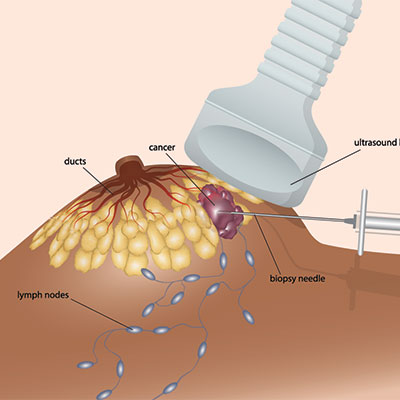The first part of the procedure will seem much like your original breast ultrasound. You will be positioned lying face-up on the examination table or turned slightly to the side. Prior to your procedure, the skin is cleaned and prepped. Then, numbing medication is injected into the skin and breast tissue. Pressing the transducer to the breast, the radiologist will locate the lesion. A very small incision is made in the skin, just large enough to allow access for the core biopsy needle. The radiologist, constantly monitoring the lesion site with the ultrasound probe, will insert the needle and advance it directly into the mass to obtain the tissue samples. Once the samples are obtained, a clip is placed at the biopsy site to mark where the tissue was sampled. This will be seen on future mammograms. If surgery is needed based on biopsy results, the marker serves as a guide, allowing the radiologist to direct the surgeon to the area that needs to be removed.
Once the tissue samples are obtained, they are submitted to a pathologist for analysis. Results are usually obtained within five working days.

